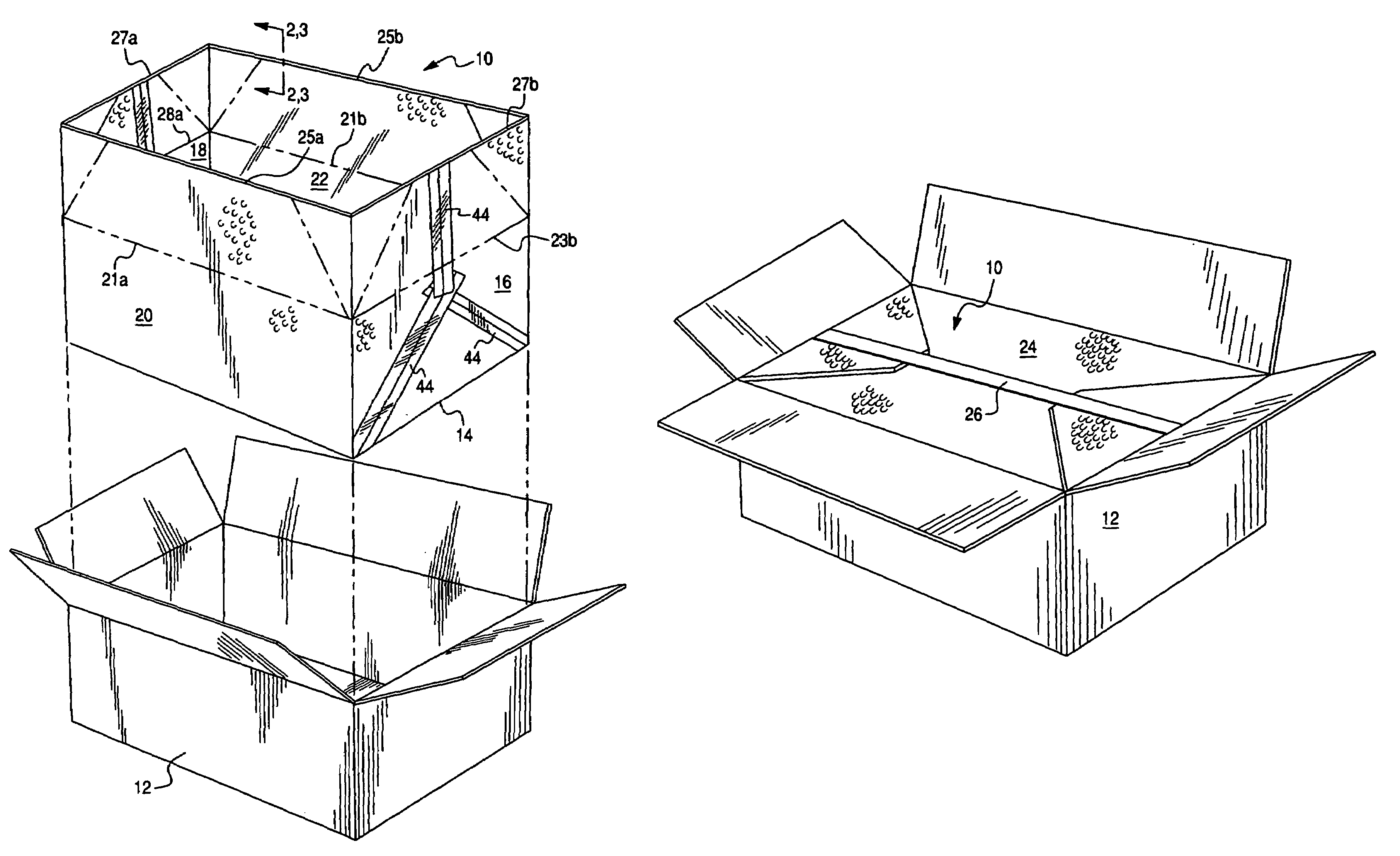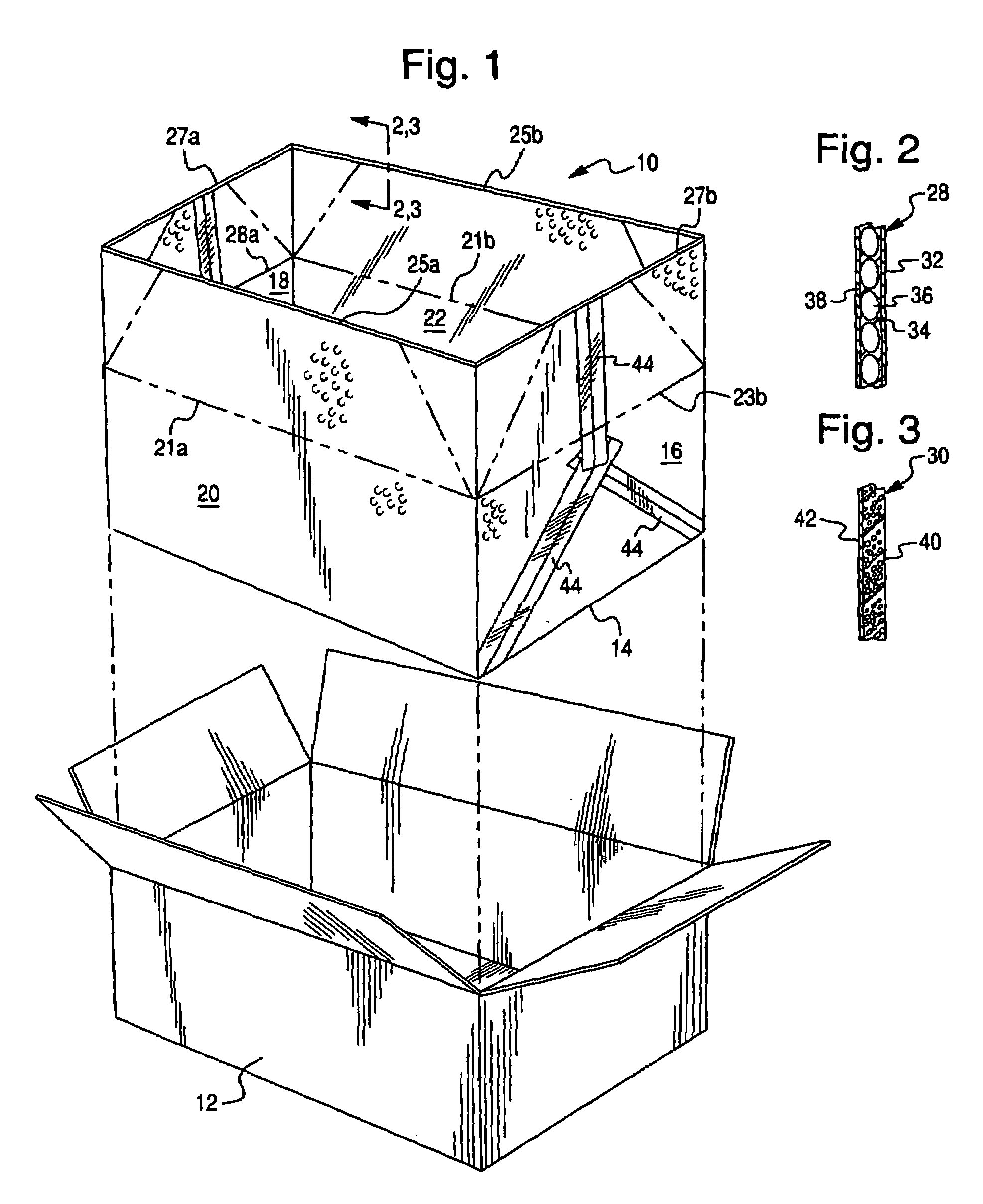Method and apparatus for packing perishable foods
a perishable food and packaging technology, applied in the field of thermo-insulating packaging, can solve the problems of increasing freight costs, increasing weight of packaging, and limited cushioning effect of the overall packaging system, and achieve the effect of improving insulating and thermal containment characteristics
- Summary
- Abstract
- Description
- Claims
- Application Information
AI Technical Summary
Benefits of technology
Problems solved by technology
Method used
Image
Examples
example i
[0056]A set of tests were performed in order to attempt to analyze the performance of the present invention compared to other assorted inner insulating containers under various conditions for a fresh food product. The test was designed to measure the insulating ability of containers not refrigerated prior to packing that contained fresh fish and were exposed to a harsh (95° F.) environment.
[0057]In order to insure accurate results, a number of parameters were held constant for all of the inner insulated containers tested. To begin with, the inner insulating containers were all placed within a regular slotted single wall “C” flute corrugated shipping container with a mottled white liner. The empty insulating containers were all conditioned together in the same chamber at 95° F. and greater than or equal to 75% relative humidity for more than 24 hours prior to testing.
[0058]The corrugated containers were sized to maintain an internal volume of approximately 1 cubic foot and were each ...
example ii
[0067]Another test was conducted to compare the performance of various insulating inner containers where the containers were refrigerated prior to packaging to approximate a cold packing situation. The parameters for this test were the same as those described in Example I above, except as indicated below. In this test the cartons and their inner containers were conditioned together in the same chamber at 36° F. and 70% relative humidity for more than 24 hours prior to testing. The following insulating inner containers were tested:
[0068]
Carton(#)Insulating Inner ContainerStyle8Present invention—a gusseted bagFlexible bagconstructed of a ½ inch thick bubblepack with a sheet of metalized poly-ethylene laminated on the inside ofthe bag.9Six (6) sheets of 1.0 pound per cubicRigid EPS boxfoot density of expanded polystyrenefrom sheetsfoam, 1 inch thick custom cut toline the top, bottom, sides and endsof the corrugated container.10A two piece container molded fromRigid EPS boxEPS foam, w.2...
PUM
| Property | Measurement | Unit |
|---|---|---|
| Mass | aaaaa | aaaaa |
| Mass | aaaaa | aaaaa |
| Length | aaaaa | aaaaa |
Abstract
Description
Claims
Application Information
 Login to View More
Login to View More - R&D
- Intellectual Property
- Life Sciences
- Materials
- Tech Scout
- Unparalleled Data Quality
- Higher Quality Content
- 60% Fewer Hallucinations
Browse by: Latest US Patents, China's latest patents, Technical Efficacy Thesaurus, Application Domain, Technology Topic, Popular Technical Reports.
© 2025 PatSnap. All rights reserved.Legal|Privacy policy|Modern Slavery Act Transparency Statement|Sitemap|About US| Contact US: help@patsnap.com



